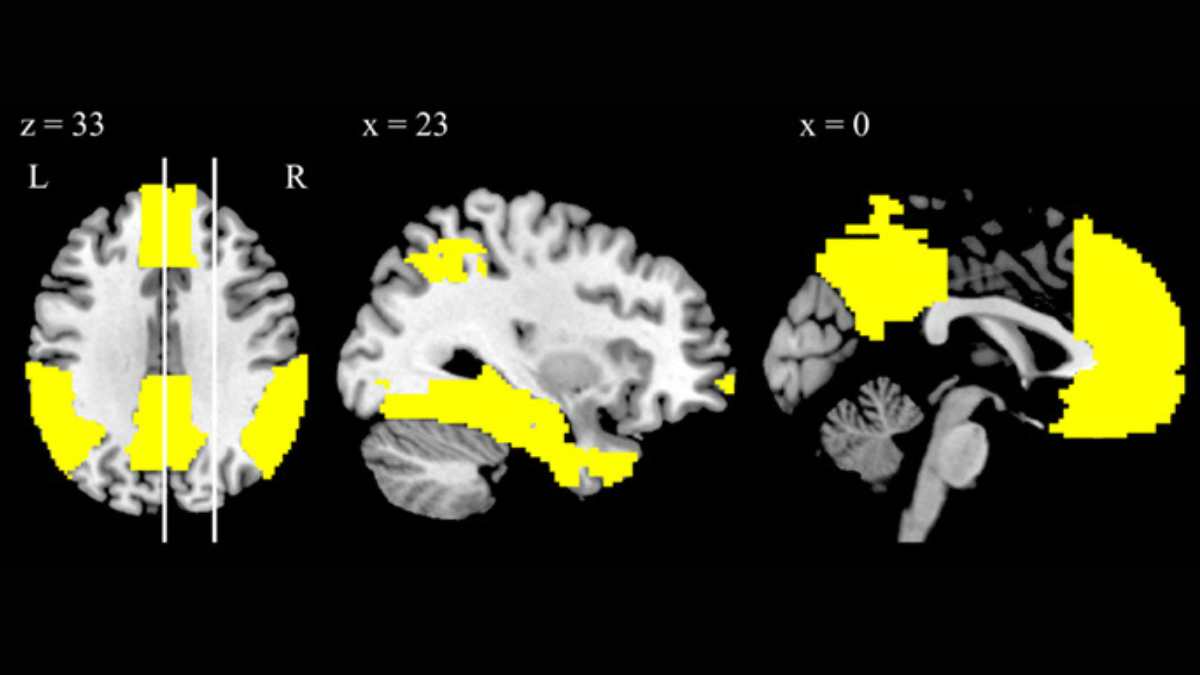The brain’s default mode network (DMN) is a network of brain regions that interact when a person is in a state of wakeful rest. Surprisingly, the brain areas involved in the DMN are the same ones active when we dream. Furthermore, the vast majority of the areas involved in the default mode network overlap with areas that appear in social cognition brain studies.
Because this network is critical for using our short-term memory, one question is if changes in the DMN play a role in the short-term memory loss seen in Alzheimer’s disease (AD) progression. Another is whether the DMN is affected differently in men than in women.
Carolyn Fredericks, MD, assistant professor of neurology and Women’s Health Research at Yale (WHRY), has been working to understand Alzheimer’s disease and why it affects women disproportionately.
Robust research shows that women are at a higher risk of Alzheimer’s disease than men. While there has been a lot of research on Alzheimer’s disease, far fewer studies take gender differences into account.
Default Mode Network Alzheimer’s Link
Fredericks’ most recent study focuses on gender differences in DMN connectivity in healthy aging adults. Fredericks and her team, including University of Washington second-year medical student Bronte Ficek-Tani, identified differences in these connections between men and women, which may provide insight into why women are more likely to develop Alzheimer’s disease.
Prior research has demonstrated that changes in brain connectivity within the default mode network are associated with symptoms and early-stage Alzheimer’s disease; however, sex differences in these changes have received little attention. The study by Fredericks also examined how connectivity varies with age in both men and women.
The team examined brain scans taken of patients while they were asleep, using information from the Human Connectome Project-Aging. They discovered that the functioning of the brain’s central communication hubs differs between men and women.
Brain Connectivity Sex Differences And Aging
The areas of the DMN responsible for memory storage and retrieval and spatial cognition were more likely to be connected to the overall DMN brain network in women than in men. These connectivity patterns resembled preclinical AD changes and were associated with the parts of the brain that control short-term memory function.
Additionally, as individuals aged, more significant sex differences were observed. In their 30s and 40s, women relied more on connections to the brain’s spatial and verbal memory-related regions. In the decades surrounding menopause (the 40s and 50s), memory-retrieval-vital regions displayed greater connectivity to the overall DMN.
Conversely, men exhibited a different pattern, with their connectivity peaking in their later years (60s–80s). The most robust connection to the DMN was found in a region of the male brain associated with habit formation and long-term memory.
Memory Wear And Tear
The researchers believe their findings indicate that women rely on DMN connections for memory longer and more frequently than men.
A high degree of connectivity may result in a network under stress and increased susceptibility to diseases such as Alzheimer’s disease. This “wear and tear” on the memory-critical regions of the brain may partially explain why women are at a greater risk for Alzheimer’s disease.
Fredericks suggested that these findings can assist physicians and scientists in gaining a better understanding of memory performance and how it relates to brain networks, even in those without Alzheimer’s disease, and in turn, inform the type of memory loss in Alzheimer’s disease. By identifying patterns in the brains of healthy, aging individuals, scientists may not only have a future target for intervention but also have a more extensive treatment window before symptoms appear.
Reference:
- Bronte Ficek-Tani, Corey Horien, Suyeon Ju, Wanwan Xu, Nancy Li, Cheryl Lacadie, Xilin Shen, Dustin Scheinost, Todd Constable, Carolyn Fredericks. Sex differences in default mode network connectivity in healthy aging adults. Cerebral Cortex, 2022;, bhac491
